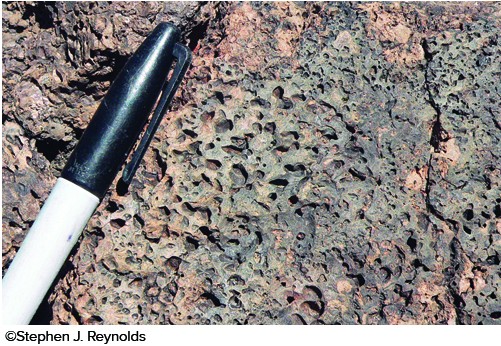Consult the CDC Web site (www.cdc.gov) and investigate one of the emerging infectious diseases or one of the "grisly seven
" What are the risks that you take, and what precautions should you take, if traveling to an area where the disease has been found?
Not all the diseases listed by the CDC have information about precautions. Some of the diseases (*) have been added to the list because of bioterrorism potential. Below is a list of the CDC listed emerging or re-emerging diseases. Risk and precaution information has been included for some.
• Drug-resistant infections (antimicrobial resistance)
• Bovine spongiform encephalopathy (Mad Cow) and variant Creutzfeldt-Jakob disease (vCJD)—unclear what the risk is; avoid eating beef or beef products from a country with indigenous cases
• Campylobacteriosis
• Chagas disease—low risk; spray infested houses; insecticide-impregnated bed nets may reduce risk for travelers who cannot avoid camping or sleeping outdoors in poorly constructed houses in endemic areas
• Cholera*—low risk; mainly a risk if drinking contaminated water or eating poorly cooked or raw seafood in disease-endemic areas
• Cyrptococcosis
• Cryptosporidiosis (Crypto)
• Cylcosporiasis
• Cysticercosis—low risk; do not eat raw or undercooked pork; wash hands, wash and peel all raw vegetables and fruit before eating; drink only bottled or boiled water
• Dengue fever
• Diphtheria
• Ebola hemorrhagic fever—low risk; most often in rural areas of developing countries; found in Africa; reservoir host is unknown; avoid locations where an outbreak is occurring
• Escherichia coli infection
• Group B streptococcal infection
• Hantavirus pulmonary syndrome*—rare; rodent control is best prevention
• Hepatitis C
• Hendra virus infection
• Histoplasmosis—fungus is common in central and eastern United States; avoid areas with bird or bat droppings because this is where fungus grows
• HIV/AIDS
• Influenza
• Lassa fever*—low risk; Western Africa; exposure to infected rodents in most likely source of human infection
• Legionnaires' disease (legionellosis) and Pontiac fever
• Leptospirosis—"Travelers participating in recreational water activities, such as whitewater rafting, adventure racing, or kayaking, in areas where leptospirosis is endemic or epidemic could be at increased risk for the disease, particularly during periods of flooding." Avoid contact with contaminated water.
• Listeriosis—medium risk; thoroughly cook raw food from animal sources; wash raw vegetables thoroughly before eating; keep uncooked meats separate from vegetables and from cooked foods and ready-to-eat foods; avoid unpasteurized milk or foods made from unpasteurized milk; wash hands, knives, and cutting boards after handling uncooked food. Consume perishable and ready-to-eat food as soon as possible.
• Lyme disease
• Malaria
• Marburg hemorrhagic fever*—low risk; found in Africa but precise geographic range is unknown; reservoir host is unknown; avoid locations where an outbreak is occurring
• Measles
• Meningitis
• Monkey pox
• MRSA (Methicillin Resistant Staphylococcus aureus)
• Nipah virus infection*
• Norovirus (formerly Norwalk virus) infection
• Pertussis
• Plague*—endemic in rodent populations in rural areas of Americas, Africa, and Asia; risk is small; use DEET, avoid sick or dead animals or rodent nests and burrows, avoid visiting areas where recent plague epidemics or epizootics have occurred; bring antibiotic with you
• Polio (poliomyelitis)—should be fully immunized if going to a country where polio still occurs
• Rabies—usually low risk but not if camping in rabies endemic countries, can be vaccinated
• Rift Valley fever—low risk; occurs primarily on the continent of Africa and into the Middle East; precautions include using insect repellent on exposed skin surfaces when outdoors, particularly during the day; wear long-sleeved shirts and long pants when outdoors; when possible, stay in hotels or resorts that are well screened or air-conditioned and take measures to reduce and exclude mosquitoes; use of bed nets is recommended if mosquito-proof accommodations are not available.
• Rotavirus infection—fairly common, usually not fatal in immune competent individuals; vaccination is possible
• Salmonellosis*
• SAR (Severe acute respiratory syndrome)
• Shigellosis*—fairly common infections; wash hands frequently; drink treated or boiled water only, eat only cooked vegetables and fruit or fruits that you peel yourself
• Smallpox*
• Sleeping sickness (Trypanosomiasis)
• Tuberculosis
• Tularemia*—occurs in the United States, use insect repellent (ticks vector); cook food thoroughly; make sure water is from safe source
• Valley fever (coccidioimycosis)
• VISA/VRSA—Vancomycin-Intermediate/Resistant (Staphylococcus aureus)
• West Nile virus infection
• Yellow fever—rarely causes illness in travelers; found primarily in South America and West and Central Africa during rainy season, vaccination is recommended; prevent exposure to mosquitoes, use DEET; wear long-sleeved shirts and long pants
You might also like to view...
Squid are the most intelligent invertebrates
a. True b. False
A low-pressure system in which the Coriolis effect is weaker than the pressure gradient force results in ________ flow
Fill in the blank(s) with the appropriate word(s).
What texture is displayed by the igneous rock in this photograph?
A. breccia B. porphyritic C. glassy D. vesicles E. None of these choices are correct.
The adiabatic lapse rate for moist air is ____
a. higher than for dry air due to latent heat absorbed during condensation b. higher than for dry air due to latent heat released during condensation c. higher than for dry air due to latent heat absorbed during evaporation d. lower than for dry air due to latent heat released during condensation e. lower than for dry air due to latent heat released during evaporation